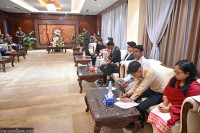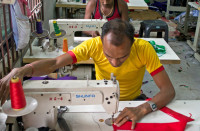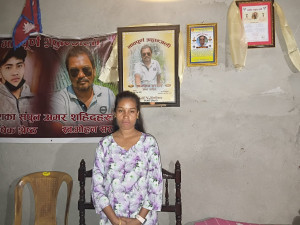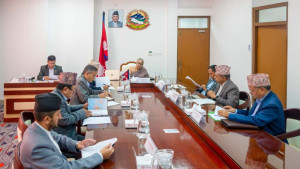Opinion
The fate and future of Guthis
The age-old cooperative system of the Kathmandu Valley finds itself at a crossroads.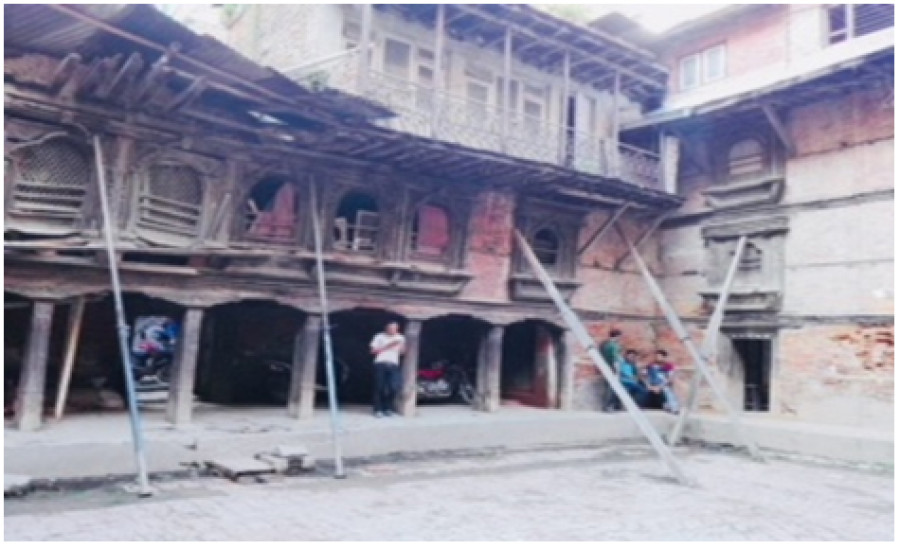
When I was in Nepal last summer, I had the opportunity to participate in a series of Guthi functions and interact with their members, youths and government officials. Having grown up in a family that actively practices the Guthi system, I find that they have long been the cornerstone of cultural celebrations, social cohesion and economic activities among Newar communities. But their influence and relevance are rapidly decreasing; more so in recent times with unprecedented changes in society, economy and politics, and rapid globalisation and movement of people, especially youths. The fate and future of the Guthi system are now seriously questioned. Are Guthis still relevant to the Newar youth? Interesting and contradictory views exist. The youth in Newar society are finding Guthis to be increasingly irrelevant.
It is clear that elderly men are proud to be Guthiyars (members). For them, it is the history and culture that matters. It is important to maintain the socio-economic order of Newar society even today. It is the system that, as one member said, ‘…brings a true sense of local community to protect culture, heritage and identity’. Another member opined that ‘Guthis provide a support system to live a collective life, successfully and happily’. Most elders believe that the Guthi is the backbone that ensures the continuation of Newar festivals, rituals and traditional practices, and is vital for conducting funerals and other death related matters and promoting traditional music, musical instruments, and traditional and religious dances.
A professor ar Tribhuvan University, who is also a Guthiyar mentioned that Guthis are more relevant today than anytime in history: ‘Guthis are a great Newar institution that demonstrates exemplary persistence and sustainability as they continue to help preserve social, cultural and economic fabrics of Newar communities. They offer inspiration to many other communities around them’, he said.
Issues with the current system
Guthis are highly gendered, as they have been exclusively controlled by men. Only male members who have undergone Bratabandha (coming of age ceremony) are Guthiyars. The cultural activities are performed by the male priest while women assist them by working behind the scenes. The title of Thakali (the head of the Guthi) is bestowed upon the oldest man from the clan but not to a woman.
Newly-wed daughters-in-law are only welcomed if they are from endogamous groups. One Newar girl who married outside her caste said, ‘I was married to a man from a different caste. My parents accepted it, but not the Guthi. None of the Guthi members attended my wedding.’ Even today, marriage outside the caste is considered shameful by the Guthi system, forcing many parents to wish their children marry within their caste. If a Guthiyar has an inter-caste marriage, his wife and children are barred from participating in Guthi activities such as Bratabandha and Ihi, although he ostensibly remains a Guthiyar for life.
Newar youths contradict the contention that Guthis are important and relevant today. Rather, they are increasingly irrelevant to them. One Newar university student asserted that Guthis are highly conservative and outdated and accused that the conservative elders have failed to respond to the interest and aspirations of the youth.
Many youths find that older Guthiyars are resistant to change, and in the name of conserving culture and tradition, they are unwilling to listen to their own children. The youths are not allowed to voice their interests and aspirations. If and when they express concerns, they are seen as unmannered and uncultured. Surely, youths are engaged in annual festivities such as Indra Jatra, Machhendranath Jatra and many other annual events. However, there aren’t many young Guthiyars engaged in the major decision making process. Yet, some youngsters have become rebellious—asking questions as one Newar boy asserted, ‘We are raised in a family where we cannot even express our opinions, but we are expected to be an example in society. How is that fair?’ Exclusionary decision making practices have isolated youths at the Guthi’s peril.
Guthi lands have been used by rulers and governments for centuries. Whether to fund wars or build palaces, gardens, government buildings, hospitals and even airports. Further, the nationalisation of Guthi land and institutionalisation of the Guthi system by forming Guthi Corporation triggered a serious decline in the traditional Guthi system. As the government took control of the traditional Guthi system, it destroyed the way of safeguarding cultural heritage.
Despite government attempts to control the Guthi system, the celebration of most traditional festivals and the maintenance of temples are still handled by traditional Guthi members. The irony is that this unique practice is not recognised well in formal heritage conservation in Nepal. The major current issue is the government’s adopting scientific Western approaches. Bureaucratic agencies such as the Department of Archaeology highly depend on foreign experts while completely ignoring the long tradition of proactive community inclusion in the city’s heritage management. The government’s disinterest in preserving the Kathmandu Valley’s sacred courtyards, which were damaged by the 2015 earthquake is an example where local communities are working hard to save their culture and tradition by rebuilding them, but they are not supported by the government through any medium.
Importance cannot be overstated
The scientific Western heritage conservation approach has a focus on tangible heritage that fails to take into consideration the important interaction between the tangible and the intangible. If we look closely at heritage conservation in Nepal, the traditional Guthi-system heritage conservation and formal heritage conservation are running parallelly and have not yet converged. The most urgent need is to recognise the importance of the Guthi system before it is swept away from modern Nepali society.
Hence, for the sustainability of the Guthi system, it is very important for them to be adaptive to the changing environment. In order for Guthis to continue, they must be relevant to the changing needs and aspirations of the youth. In addition, women must be recognised more and more genuinely in Guthi activities and have a specific stand or role in the system. Moreover, the government should recognise and understand the indigenous knowledge, system and practices. Not only the government but the indigenous people should recognise their own potential. People should raise their voices for change which will be an example for many other indigenous people whose tradition and culture are on the verge of extinction.
Bajracharya is a Scientia PhD Scholar in the School of Social Sciences at the University of New South Wales (UNSW) Sydney, Australia




 17.12°C Kathmandu
17.12°C Kathmandu